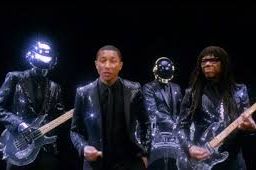The study, Recut, Reframe, Recycle: Quoting Copyrighted Material in User-Generated Video, suggests strongly that remix culture is not only socially acceptable, but should also be legally acceptable because transformative reuse falls within the fair use exception/defense to copyright. The issue of using portions of copyrighted material in videos as a form of quoting has previously been discussed as a concern by others, including Sam Ford at the MIT Convergence Culture Consortium blog.
The researchers at the Center for Social Media (Investigators Pat Aufderheide and Peter Jaszi, Research Coordinator Neil Sieling — and others (Ashley Gordon, Alison Hanold, Colleen Mulcrone, and Winn Phillips)) based their research on thousands of links for videos on 75 online video platforms and categorized these videos into nine popular kinds of use (The database they draw from is at centerforsocialmedia.org/recutvideos).
Aufderheide says that “Today, user-generated video … add[s] value to existing copyrighted material, usually without the copyright owner’s consent … This kind of work is the harbinger of an emerging era of participatory popular culture.” Jaszi states that much of the “common online uses today could comply with fair use as currently understood.”
I absolutely loathe the first sentence below in the press release/ blog post about the study:
So when makers mash up several works—say, The Ten Commandments, Ben-Hur and 10 Things I Hate about You , making Ten Things I Hate about Commandments —they aren’t necessarily stealing. They are quoting in order to make a new commentary on popular culture, and creating a new piece of popular culture.
Stealing? Using this type of terminology follows the idea of intellectual property as physical property, which it isn’t. Quoting doesn’t destroy or control the original when words are used; neither does the type of quoting contained in videos (in rare cases, it could diminish the value of the original, which does not easily fit with the acceptance of parody in U.S. copyright law). The second sentence gets it right — something new is being created.
The study’s nine types of re-appropriation (more examples here):
Parody and satire: Copyrighted material used in spoofing of popular mass media, celebrities or politicians (Baby Got Book)
Negative or critical commentary: Copyrighted material used to communicate a negative message (Metallica Sucks)
Positive commentary: Copyrighted material used to communicate a positive message (Steve Irwin Fan Tribute)
Quoting to trigger discussion: Copyrighted material used to highlight an issue and prompt public awareness, discourse (Abstinence PSA on Feministing.com)
Illustration or example: Copyrighted material used to support a new idea with pictures and sound (Evolution of Dance)
Incidental use: Copyrighted material captured as part of capturing something else (Prisoners Dance to Thriller)
Personal reportage/diaries: Copyrighted material incorporated into the chronicling of a personal experience (Me on stage with U2 … AGAIN!!!)
Archiving of vulnerable or revealing materials: Copyrighted material that might have a short life on mainstream media due to controversy (Stephen Colbert’s Speech at the White House Correspondents’ Dinner)
Pastiche or collage: Several copyrighted materials incorporated together into a new creation, or in other cases, an imitation of sorts of copyrighted work (Apple Commercial)
I’m unsure about how the researchers have categorized materials, though I think it is a great starting point for original research. Let’s take the video linked above, BlackNerd’s Buy Mii a Wii, through the study’s nine types of reuse: Parody and satire (makes fun of Nintendo, Wii, T-Pain’s “Buy U a Drank,” nerdyness); Negative or critical commentary (nope!); positive commentary (Nintendo & Wii are great; Mario Brothers and other games are addictive); quoting to trigger discussion (unless it is to comment on how difficult it is to buy a Wii, no); Illustration or example (many of the visuals, such as Mario Brothers and other games could count); Incidental use (much of the background material); Personal reportage/diaries (BlackNerd wants a Wii, wants to tell us about it); Archiving of vulnerable or revealing materials (no); and Pastiche or collage (yes, considering the number of different materials used). So Buy Me a Wii, rates a 6 out of 9 possible uses!
I’m intrigued by the idea that parody and satire are in the same category, considering the often-very-fine distinction between the two has been important in discussions about copyright law since Campbell. Actually ending this distinction would make many re-users much more comfortable in knowing that their use is fair use, considering parody and satire are both transformative.
I love the idea of best practices as suggested by the study — but I’m unsure about how it would actually work. The standard for best practices is documentary filmmakers. I’m not sure how much agreement different types of content makers and stakeholders will have in determining what types of uses are truly transformative.
The study states that
By contrast with filmmakers, musicians, or teachers, however, online media makers do not represent a mature, bounded community of practice.By contrast with filmmakers, musicians, or teachers, however, online media makers do not represent a mature, bounded community of practice.
And the study itself points to the difficulty in using traditional fair use principles and ways of looking at media:
Certain online video uses of copyrighted works can be assessed according to conventional fair use doctrine as it applies to criticism and commentary. This is so despite the fact that many videos that incorporate copyrighted work range far from conventional media critiques. Some are the enthusiastic, adulatory work of fans, who have traditionally had a contentious relationship with mainstream media critics. Some embed their criticism or comment within a new work that materially builds on the work commented upon. Some comments are little more than a gesture—a verbal equivalent of finger pointing (“Yuck”). In this new environment, many creators add meaning without bringing the copyrighted material itself under critical scrutiny, but instead by quoting selectively and purposively [sic] from the preexisting work. Some of these practices also fit comfortably into the evolving pattern of fair use jurisprudence. By contrast, other video makers appropriate material wholesale and without context or comment, in ways that clearly are not fair use. In all these cases, informed judgment on fair use, following established precedent, should be relatively straightforward.
Many times, however, for instance within the category that our researchers called “pastiche or collage,” creators are developing practices that are at or near the boundaries of contemporary fair use analysis. Traditional fair use analysis would neither definitively exclude nor include them—at least until there is a better understanding of motive, context, circulation, and use of the new works. Since fair use doctrine evolves with creative practice, these borderline cases provide important areas for future research and analysis.
This study is an exciting jumping-off point for additional research by the Center for Social Media (and I know I’ll be building my research on it!). Comments by others on this study are here, here, and here. And the blog at the Center for Social Media commenting on this study and beyond is here.
(Almost completely off-topic: I’m surprised that this study assumes that “Happy Birthday” is copyrighted because its status is in doubt.)




[…] posted their Code of Best Practices in Fair Use for Online Video (16 page PDF Report). This Report is a follow-up to the Center’s study, Recut, Reframe, Recycle: Quoting Copyrighted Material in […]
I can’t believe my video has been used for a thesis! 🙂 Thanks, and very intriguing article. Trust me, this is something I talk about a lot.
There also seems to be what generally is considered fair use and what is considered fair use by whoever hosts the video (i.e. YouTube, Revver, etc.) Love this discussion.
[…] Two years ago, American University’s Center for Social Media released a study, Recut, Reframe, Recycle: Quoting Copyrighted Material in User-Generated Video, suggesting strongly that remix culture is not only socially acceptable, but should also be legally acceptable … […]